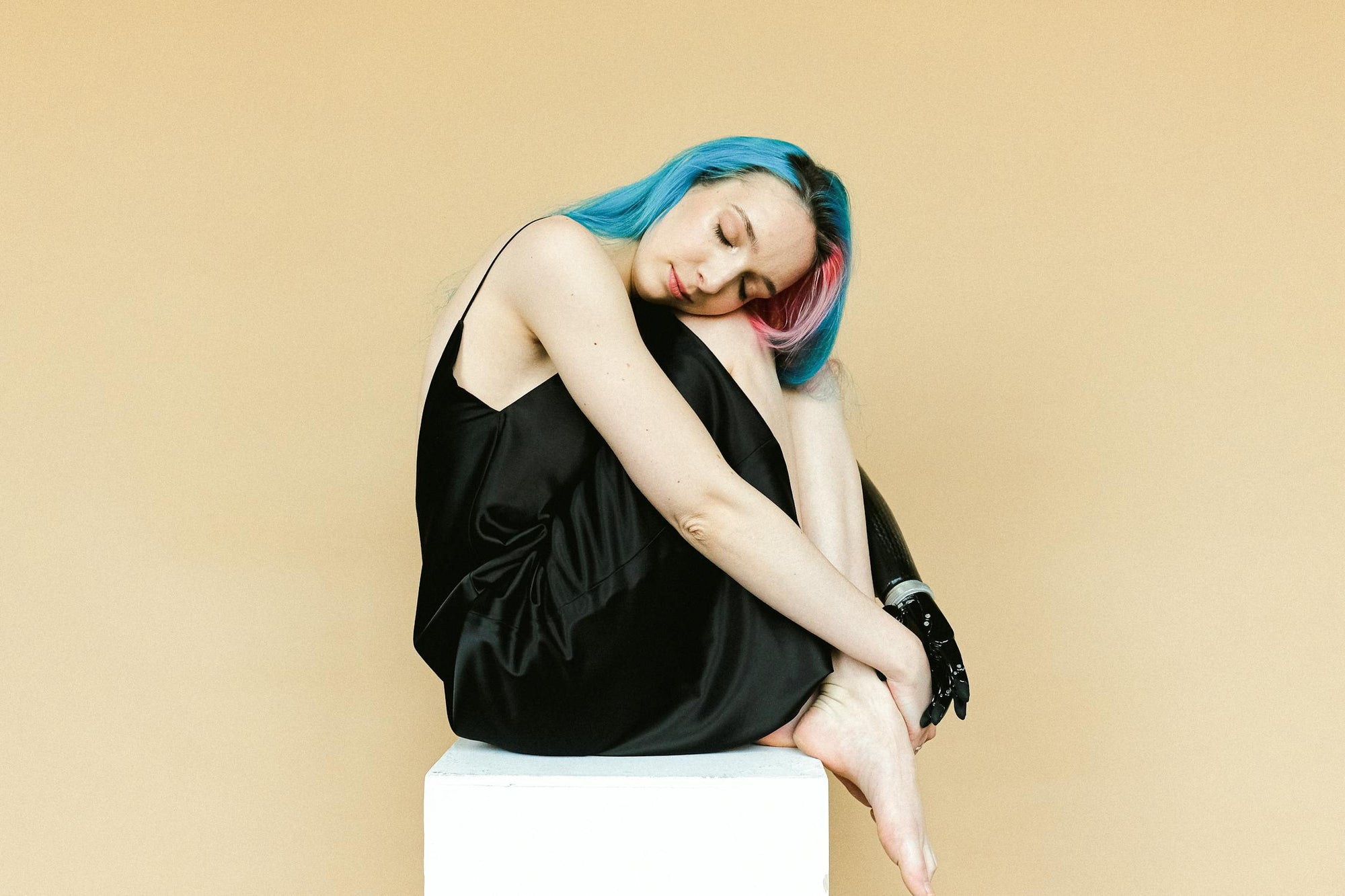Colored hair looks lovely when freshly done, but proper care is needed to maintain its vibrancy and sheen over time. From the first wash to your everyday habits, how you take care of your colored hair determines the length of time your color lasts and how well your hair stays healthy. Whether you’ve gone for a bold red, a radiant blonde or a deep brunette, here’s a complete guide to caring for your color-treated hair. In this comprehensive guide, we’ll walk through the science behind color-treated hair, the best care practices for long-lasting vibrancy and expert-recommended strategies to keep your hair looking salon-fresh. Beauty Market Online provides a range of color-care products which include sulfate-free shampoos, deep conditioners and restorative serums. They are formulated to suit the requirements of different hair types, including dry, oily or chemically treated hair.
Why Colored Hair Needs Special Care
Hair coloring is not a superficial change; it actually changes the composition of your locks. Most hair dyes work by lifting the top cuticle layer to place new color within the hair shaft. This opens up the hair and makes it more porous, which softens its natural barrier and makes it vulnerable to dehydration, environmental stress and color fade. When the cuticle is damaged, it's harder for hair to stay moisturized or retain color. That's why colored hair feels drier and more brittle. The dyeing process removes necessary lipids and proteins, which weakens the integrity of the hair even more.
Reversing these changes is the key to effective color care. The objective is to restore balance and provide color molecules with protection while supporting the internal structure of the hair with moisture, strength and protection.
Start with a Sulfate-Free Shampoo
Your shampoo selection is key when maintaining color-treated hair. Normal shampoos include sulfates that produce a rich lather but are damaging to hair. These chemicals can remove not just dirt and oil but even the actual pigments providing the color to your hair. A sulfate-free shampoo is not optional for color-treated hair. Such products incorporate milder surfactants that clean without over-drying and cutting the cuticle. Use shampoos with moisturizing ingredients such as coconut-derived surfactants, aloe vera, glycerin, or amino acids. Such ingredients work to keep the hair's moisture in balance and also lift off impurities on the scalp and hair. Try KERAGEN Smoothing Shampoo; it is the ideal combination of keratin, collagen, and vitamins to deeply moisturize, fortify and restore hair. This sulfate-free shampoo gently cleanses without stripping color vibrancy, minimizing frizz, and maximizing natural shine.
Also critical is water temperature. Hot water lifts the cuticle, permitting color molecules to escape. Shampooing your hair in warm or cold water seals the cuticle and keeps pigment and moisture in, providing your color with longer life and your hair with a smoother, glossier finish.
Weekly Deep Conditioning is a Must
While your daily conditioner hydrates on the surface, it won't be enough to fight the internal damage that coloring does. That's where deep conditioning treatments are used. These intensive masks penetrate deeper than the cuticle layer to rebuild, rehydrate, and strengthen the internal bonds of the hair. Use SOBE LUXE Deep Moisturizing Hair Mask. This deep mask repairs dry, damaged hair with shea butter, argan oil, and keratin. It makes the hair soft, hydrated and frizz-free.
Try to deep condition your hair at least once a week and more often if you heat style or have had several color treatments. Select a treatment that is filled with repairing ingredients like
-
Shea butter or avocado oil for intense moisturizing
-
Hydrolyzed proteins to repair damaged hair structures
-
Ceramides and fatty acids to rebuild the protective lipid barrier
For best results, apply the mask following washing, let it sit 10 to 20 minutes, and rinse with cold water to seal the cuticle. Gradually, deep conditioning not only enhances elasticity and softness but also causes color-treated hair to resist breakage and fading more effectively.
Don’t Over-Wash: Extend Time Between Shampoos
Washing your hair too often is one of the fastest ways to dull your color. With each wash, however gentle, some pigment is stripped away. Shampooing two to three times a week is best for most individuals who have color-treated hair. It allows your scalp sufficient time to secrete its natural oils, which serve as a protective shield for both your locks and your color.
In order to maintain a fresh appearance on your hair in between washings, include a dry shampoo. The product seeps up unwanted oil at the roots, keeps the scalp clean, and imparts a light lift. Use only a dry shampoo that's designed for color-treated hair so buildup or residue occurs and your hair can become discolored in an ashy or matte sheen.
Always Use Heat Protection
Heat styling tools such as flat irons, curling wands, and blow dryers are style staples, but they also speed up color loss and damage risk—particularly on already-porous, color-treated hair. Without some sort of shield, extremely high heat can break down the pigment molecules in your hair and make the cuticle further fray and split.
Apply a heat protectant spray, cream, or serum prior to styling with heat at all times. Choose products that:
-
Shield up to 400°F–450°F
-
Add ingredients such as dimethicone, silk proteins, or argan oil
-
Provide additional benefits such as frizz control or shine
Utilizing heat tools on the lowest setting possible and restricting their use to a few times a week can greatly extend the life of your color while keeping your strands healthy. Find the ultimate protection from heat damage in KERAGEN Heat Protectant Spray. With keratin and collagen, it keeps your hair silky, glossy, and frizz-free with every thermal styling appointment. Suitable for all hair types, it provides salon-quality results in the comfort of your home.
Schedule Regular Trims
Even the healthiest color-treated hair can get split ends or frizz after a while. Having a regular trim every 6 to 8 weeks ensures that damaged ends are cut off, which keeps your look neat and smooth and prevents breakage from creeping up the shaft.
If you’re growing your hair out, ask your stylist for a "dusting"—a light trim that removes the most fragile ends without taking off significant length. Keeping ends healthy supports overall hair integrity, enhances color reflection and ensures a smoother finish.
Use Color Refreshing Treatments Between Appointments
Even with perfect care, nearly all hair colors begin to fade or change eventually. In order to maintain your color, incorporate color-restoring treatments into your regimen. These may involve:
-
Color-depositing masks or conditioners
-
Tinted glosses to add luster and re-establish tone
-
Purple or blue shampoos to counteract brassy color
These products assist in preserving color vibrancy and tonal balance correction, enabling you to wait longer between salon appointments while still having a fresh, dimensional appearance.
Boost Hair from the Inside Out
Your hair's health mirrors your internal well-being. A well-balanced diet packed with biotin, vitamin E, zinc and omega-3 fatty acids fuels strong hair growth and natural shine. Some foods good for hair to put at the top of your list include:
-
Eggs (biotin and protein)
-
Avocados (healthy fats and vitamin E)
-
Fatty fish such as salmon (omega-3s)
-
Nuts and seeds (zinc and antioxidants)
Don't neglect hydration—stay hydrated with plenty of water every day to keep moisture from the inside out, which is particularly crucial for color-treated hair that tends to be dry.
Choose Smart Tools
The equipment you use every day can make a big difference in the life and health of your color. On damp hair, always apply a wide-tooth comb to help prevent stretching and breaking. For dry styling, select boar bristle brushes that spread natural oils and add shine. For heat styling, select ceramic or tourmaline tools with temperature controls that can be adjusted. These spread heat consistently and minimize the danger of hot spots that will fry color-treated hair. Being choosy with your tools prevents damage to the integrity of your hair and makes your color look its best longer. Ready to discover the top color-care products for your hair? Beauty Market Online offers a carefully curated range to match every hair type and concern, so you can achieve the results you desire.
Conclusion
Colored hair looks its best when treated with care, intention and a little extra protection. By adjusting your routine, choosing the right products, and making a few smart lifestyle tweaks, your color can stay as bold and beautiful as day one. Need help choosing the right products for your hair type? Beauty Market Online has tailored solutions—so your hair stays vibrant, no matter what shade you’re rocking.
FAQs
1. Can I wash my hair immediately after coloring?
It’s best to wait at least 48 hours after coloring before washing your hair to allow the color to fully set.
2. How can I prevent my color from fading too quickly?
Avoid washing your hair too often, use sulfate-free products, and protect your hair from UV rays and heat.
3. Is purple shampoo necessary for color-treated hair?
If you're blonde or have highlights, purple shampoo can help neutralize yellow or brass tones and keep your color looking fresh.
4. How often should I deep condition my colored hair?
Deep condition your hair 1–2 times a week to maintain hydration and elasticity.
5. Does dry shampoo affect color-treated hair?
As long as it’s formulated for color-treated hair, dry shampoo can help refresh your hair without stripping the color.



